| | | | | | | | Pascal | | tic du plastoque toc du plastique | | Tracks leader | 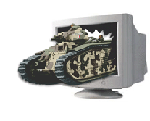 | | 3422 messages postés |
|  Posté le 20-09-2005 à 23:45:44 Posté le 20-09-2005 à 23:45:44    
| Un ptit coup de chapeau au téléfim d'hier sur la 2. Pour une fois qu'un certain effort est fait au niveau des véhicules et des uniformes !
Il y avait un beau Laffly qui tractait un canon de 25 entre autre et l'histoire était bien filmée et restituait bien l'ambiance de ces jours sombres.
Pascal
--------------------
L'ennemi est bête, il croit que c'est nous l'ennemi alors que c'est lui. (Pierre Desproges) |
| | CEDRIC | | faire avec presque rien!!!!! | | chef des mots tôts et des mots tard | 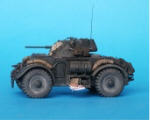 | | 3091 messages postés |
|  Posté le 21-09-2005 à 06:24:37 Posté le 21-09-2005 à 06:24:37    
| pas pu regarder : je bossais :-(
--------------------
Amicalement
Cédric
Apprendre en faisant, faire en apprenant |
| | JFF83 | | Tracks leader |  | | 2821 messages postés |
|  Posté le 21-09-2005 à 09:18:13 Posté le 21-09-2005 à 09:18:13   
| Sympa la caricature du général s'enfuyant en traction citroen....et sans rougir face à des pauvres types prêt à se faire tuer pour un pont.
|
| | quepwik | | La guêpe de l'espace | | Ludiverbiste fou |  | | 3368 messages postés |
|  Posté le 21-09-2005 à 11:41:48 Posté le 21-09-2005 à 11:41:48   
| pas vu !!!!!!!
en plus, j'ai enregistré landru !
--------------------
L'administration est un lieu ou les gens qui arrivent en retard croisent dans l'escalier ceux qui partent en avance. |
| | Pat95 | | Tracks leader | 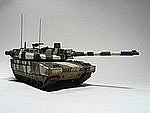 | | 5276 messages postés |
|  Posté le 21-09-2005 à 12:35:34 Posté le 21-09-2005 à 12:35:34    
| Moi, j'ai vu Landru.... (eeeeeh oui !!  ) )
Patrick
--------------------
"Messieurs les maitres, veuillez assurer vos chapeaux , nous allons avoir l'honneur de charger !"
Mr de Montesson, commandant la Maison du Roi, bataille de Fontenoy, 11 mai 1745. |
| | Alain | | Tracks leader | 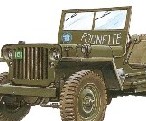 | | 1787 messages postés |
|  Posté le 21-09-2005 à 12:56:35 Posté le 21-09-2005 à 12:56:35   
| vu les 2 (landru en direct et 3 jours en juin enregistre en differe).de toute facon je connaissais la fin des 2 films!
Pas mal les 3 jours en juin notament au niveau matos(pas de tank en ocre cam 3tons...)par contre le coup du peloton de pz II avec les memes numeros ont me la fait pas.bon mais c est dur de trouve 10 modele en etat de marche.
Au niveau realite historique plus reserve bien que pas specialiste..
(episode des civils tirant sur les militaires francais,soldat allemands de la werhmart ou panzer commetant des crimes de guerre en france en 39..)
--------------------
Alain |
| | JFF83 | | Tracks leader |  | | 2821 messages postés |
|  Posté le 21-09-2005 à 13:37:17 Posté le 21-09-2005 à 13:37:17   
| ils ont peut être voulu tout représenter en 1H30 .
le Pb c'est qu'on sombre vite dans l'invraissemblance du moins à certains niveaux.
|
| | Laurent | | Faire petit et le faire bien ! | | Tracks leader |  | | 11249 messages postés |
|  Posté le 21-09-2005 à 14:44:13 Posté le 21-09-2005 à 14:44:13   
| Surtout pour les connaisseurs qui ne représentent que 10 % au mieux.
90% des autres ni voient qu'un film sur la défaite française de 40.
à la ligne
au suivant
--------------------
Laurent
------------------------------------------------------
j'parle pas aux cons, ça les instruit !
les cons ça ose tout, c'est à ça qu'on les r'connait !
Audiard |
| | Pascal | | tic du plastoque toc du plastique | | Tracks leader |  | | 3422 messages postés |
|  Posté le 22-09-2005 à 09:06:30 Posté le 22-09-2005 à 09:06:30    
| Il y a eu, hélas, des crimes de guerre en 40 contre les troupes coloniales. Quand à l'épisode des civils français tirant sur les soldats, c'est peut être un peu éxagéré bien qu'il y ai plusieurs exemples d'élus essayant de convaincre les troupes de ne pas défendre tel pont ou tel carrefour par peur de voir le village dévasté....
Pascal
--------------------
L'ennemi est bête, il croit que c'est nous l'ennemi alors que c'est lui. (Pierre Desproges) |
| | Alain | | Tracks leader |  | | 1787 messages postés |
|  Posté le 22-09-2005 à 12:55:37 Posté le 22-09-2005 à 12:55:37   
| Pascal a écrit :
Il y a eu, hélas, des crimes de guerre en 40 contre les troupes coloniales. Quand à l'épisode des civils français tirant sur les soldats, c'est peut être un peu éxagéré bien qu'il y ai plusieurs exemples d'élus essayant de convaincre les troupes de ne pas défendre tel pont ou tel carrefour par peur de voir le village dévasté....
Pascal |
Effectivement par des regiments ss.Mais je n avais pas entendus parle de ce genre d episode de prisonniers passes par compagnies entieres sous les chenille des chars...Ceci dit c etait un bon telefilm(que j ai d ailleurs prefere a landru...)
--------------------
Alain |
| | David Lehmann | | Bien connu de nos services | 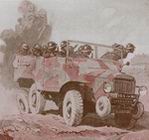 | | 111 messages postés |
|  Posté le 22-09-2005 à 14:32:22 Posté le 22-09-2005 à 14:32:22   
| Bonjour,
Je n'ai pu regarder le téléfilm que d'un oeil. Je l'ai toruvé souvent caricatural mais il essayait de bien montrer les différentes réactions des français durant la panique de Juin : ceux qui veulent se battre, ceux qui fuient, les civils dont les haut dignitaires faisaient effectivement tout pour éviter des combats dans leur localité (on a vu ça à Saumur et ailleurs), les différents courants politiques etc.
Les Panzer II (sans les mitrailleuses) semblent en effet être 1 char qui a été dupliqué par des moyens informatiques.
Sinon sympa de voir un peu de matos français ... mais même au début de la 7e compagnie on voit des Laffly si je ne m'abuse 
Le coup des civils qui attaquent les militaires français j'ai trouvé ça plutôt très nul et exagéré ... sans doute par manque de moyens financiers pour filmer une vrai bataille contre les chars ... d'ailleurs même pour la charge des Sénégalais on ne voit rien à part des gus courir dans les bois ... puis des gus par terre.
Franchement niveau pont je préfère "un pont trop loin" 
Quant aux crimes de guerre, il y en a eu pas mal tout de même en 1940 ... contre des troupes coloniales françaises surtout mais aussi des européens (français et britanniques) et des civils (belges et français). Il ont surtout été l'oeuvre de la SS-Totenkopf mais la 7.PzD de Rommel et le régiment Grossdeutschland sont aussi impliqués.
Voici un texte que j'avais écrit sur le sujet en anglai avec des livres qui doivent plus ou moins traiter de la manière dont l'Allemagne voyait et traitait les troupes coloniales françaises.
1) La Honte Noire
"L'Allemagne et les troupes coloniales françaises 1914-1945"
by Jean-Yves Le Naour
The "black shame (= la honte noire)" is an expression used by the Germans after WW1. It is in fact a worldwide propaganda campaign organised by Germany against the presence of French colonial troops in Germany. It is based on lies and systematic accusation of rapes of white women in the occupied areas. These rumors had to convince the German people and the world public opinion that France was an enemy of the "Kultur" and of the European civilisation. They wanted to depict France as hateful and militarist country, a country that wanted to introduce bastards and syphilis in the "pure German people". Hitler used these accusations also in "Mein Kampf" and in 1935 he ordered to sterilize all the children born from black/ "white" German couples, before killing them later. In France, Jean Moulin (prefect of Chartres) makes his first resistance action by protecting black troops but thousands have already been executed ... these executions are the results of the German propaganda ... the same that will depict the Soviets as "Untermenschen" that they have the right to kill.
2) Hitler's African Victims: The German Army Massacres of Black French Soldiers in 1940
By Raffael Scheck
Under contract by Cambridge University Press, scheduled to appear in early 2006.
During its campaign against France in 1940, the German army killed several thousand black French POWs belonging to units drafted in French West Africa (Tirailleurs Sénégalais). The Germans had no orders requiring the killing of black prisoners, but a historically grounded racism provided a sense of authorization for the massacres, while certain battlefield dynamics helped to trigger them.
The stigmatization of black men in arms as perfidious and cruel savages dated from the German colonial wars in the first decade of the twentieth century. The Nazis activated this image in May 1940 with a massive propaganda offensive targeting the black soldiers in the French army. This racist indoctrination, however, was not sufficient to cause massacres given that the treatment of black French POWs was highly inconsistent. Drawing from works in social and military psychology, the book shows that situational factors, such as the finding of a mutilated German soldier, the battle fear associated with close combat, and the frustration of encountering determined resistance toward the end of the campaign, tended to “confirm” the prejudice against black combatants in the minds of German soldiers and to make massacres more likely.
Hitler's African Victims connects the massacres to the debates on the Nazification of the German army during World War II. Although the German invasion of France in 1940 is usually depicted as a traditional political and military conflict not shaped by ideological factors, the massacres of black soldiers show that it also carried features of a race war. It thus appears not as a hiatus but rather as a crucial link in the gradual barbarization of the German army that began with war crimes in Poland in 1939 and led to the racially motivated atrocities in the Soviet Union beginning in 1941. The book also places the abuses in the context of the treatment of non-whites stigmatized as “illegitimate combatants” in colonial wars.
Although the murders of captured black soldiers in France were, according to a contemporary source, “common currency” during the German invasion, they have been almost completely absent from the public memory of the war and from narratives of the campaign. No war crimes trials against the perpetrators took place, and the executions of black POWs were never considered in the recent public debates about German war crimes in World War II. The book therefore covers new ground and promises to be of great interest to experts as well as a broader reading public concerned with the crimes of the German army.
3) Noirs dans les camps Nazis
by Serge Bilé
Recently a book was also published about the blacks in the Nazi concentration camps. I never had this one in my hands and only heard about it on TV.
AFAIK, in 1940 the German POWs were treated well, the French "white" POWs generally too also (but largely deported in Germany in working camps) but all the black troops were badly treated by the Germans and many war crimes have been committed against them.
Concerning the mentioned war crimes in France in 1940, I learned about them while reading
"La campagne de 1940"
a book written as a report after an international History congress about the Campaign of 1940. It took place on 16-18th 2000 November in Paris.
the book was written under the direction of Christine Levisse-Touzé
Editor : Tallandier
2001
ISBN : 2-235-02312-6
1) AROUND LYON
Near Lyon there is a memorial monument and cemetery, the "Tata", dedicated to the French colonial troops, especially the Senegalese tirailleurs. It was erected on 8th November 1942. The cemetery contains 188 graves of tirailleurs from the 25e RTS (régiment de tirailleurs sénégalais) who felt during the battle or who were executed after the battle. Most of these men have been executed as they were POWs next to Lyon on 19th and 20th June 1940.
Beside the Senegalese troops other people were executed at this occasion :
- 17 European NCOs from the 25e RTS
- 2 European officers (sous-lieutenant Cevear and sous-lieutenant de Montalivet) from the 25e RTS
- 4 gunners from the 405e RADCA (régiment d'artillerie de défense contre avions) (their execution has been witnessed by nuns – Service Historique de l'Armée de Terre 34 N 5)
- 1 French civilian of the town of Evreux (testimony of Mr Barriot)
On 19th June morning, there are combats in front of Lyon, on the national roads n°6 and n°7, defended by 2 battalions of the 25e RTS. The war crimes begin during the afternoon, around 15h00 and are at first perpetrated by the "Grossdeutschland" infantry regiment near the convent of Montluzin. The Germans are hunting the blacks and the WIAs are executed. The 2 French officers who took the defense of their black troops are also executed, as well as the 4 gunners.
2 tirailleurs are later found with a bullet in the head next to Limonest.
2 tirailleurs are at first shot in a street of Champagne-au-Mont-d'Or. 10 other blacks are later executed in this same town.
At Lyon itself, 20 tirailleurs are separated from the white troops of the POW column and shot. The Germans launched grenades on the regrouped dead bodies and burned them. They stopped the other POWs columns so that they contemplate the scene (note of Jean Marchiani – association des anciens des troupes coloniales).
In the night of 19-20th June, 30 Senegalese are shot in the cellars of the prefecture of Lyon (communication of Mr Cohendy, deputy mayor, who was kept prisoner in the prefecture).
On 20th June there are other war crimes committed by the SS-Totenkopf division arriving on the national road n°7. In the town of Evreux, 9 blacks are captured, tortured, mutilated and shot or thrown in a burning farm. The farmer has also been executed after having been accused of hiding black troops (testimony from Mr Barriot and Mr Vialy recorded by the author)
At Fleurieux, blacks are burned in a farm.
At Lentilly, 12 blacks are forced to dig their graves before being executed.
At Chasselay, after a last stand tirailleurs (blacks and whites) are captured and separated according to their skin colour. The blacks are marching about 20 meters in front of the white column. 400-500m after the exit of the village, a German column (AFVs and trucks with troops) stops at the level of the blacks. The whites are ordered to lie on the ground. The German armoured column opens fire at 10m against the Senegalese (with their hands up) under the eyes of the white soldiers. Several men tried to escape and are systematically killed. After about 15 minutes, the white are ordered to move on. Arrived at a German HQ, they are grouped in a truck and sent to Lyon (testimony of corporal Scandariato, also found in "le Tata sénégalais de Chasselay", p.35, by Jean Poncet).
The group of white soldiers in this case were apparently saved by the arrival of a liaison motorcyclist with order to regroup them in a town in the vicinity (testimony of corporal Scandariato).
The testimony of a French NCO of this group indicates that the Germans AFVs crushed the black bodies while trying to stop fleeing POWs. He also indicates that the Waffen-SS have taken photos of the tragedy (testimony of adjudant Requier, SHAT 34 N 5).
More blacks, WIA or too tired to advance in their POW columns are later also executed on the road to Tarare. The executions near Lyon seem to stop on 20th June evening.
All these testimonies and findings were largely compiled thanks to the work of Jean Marchiani. In 1940, he was an important departmental state employee (secrétaire général de l'office départemental des mutilés, anciens combattants et victimes de guerre). Already in August 1940 he worked to regroup the bodies, to identify them and to give them decent graves. (departmental archives of the Rhône, 437 W 173).
In fact very few have been researched about the massacres of the French troops in May/June 1940. The administration of 1940 was knocked down, it could not do anything and probably also did not really wanted to study the question. The France of 1944-1945 after the liberation did not want to speak from the collapse of 1940 and worked only on the war crimes committed under the occupation but not during the combats of 1940. In all France, only 3 departments started more or less important inquiries about war crimes in 1940 against black troops.
2) IN THE OISE
The inquiry starts thanks to a witness (soldier in 1940) and a mass grave is found near Erquivilliers with 64 tirailleurs from the 16e RTS and 24e RTS (departmental archives of the Oise, 33 W 8259).
3) IN THE HAUTE-MARNE
Several civilians are requisitioned to bury dead German soldiers. During their work, they discover about 20 dead blacks hung in the trees with barbed wire. There hands are tied up and the bodies are burned. There are jerry cans at their feet. (The author is still performing more researches about these testimonies).
4) IN THE SOMME
During the fights between the 53e RICMS (Régiment d'Infanterie Coloniale Mixte Sénégalais) belonging to the 7e DIC and the 7.Panzerdivision (Rommel), taking place in Airaines from 5th to 7th June 1940, the losses are heavy on both sides. Out of ammunition, the 5th company surrenders. Black and white men are separated. The captain N'Tchoréré is a black but also the commander of the company. He was simply shot (Association des anciens du 53e RICMS, letter of colonel Le Bos).
According to the "association des anciens du 53e RICMS" and its "bulletin de liaison n°36 of 1954" the fate of the men present with captain N'Tchoréré remains unclear. These men were perhaps among the soldiers executed just next to Airaines (104 bodies) :
- in the gardens of a castle 21 bodies were found in a mass grave
- 83 other bodies were found in the vicinity, they had been thrown in a natural ditch known as the "Saut du Loup"
The information was provided by civilians who discovered the bodies but there are no eye witnesses of the executions themselves (association des anciens du 53e RICMS - bulletin de liaison n°36 of 1954).
But in most of the cases there are no civilian witnesses, they are either hidden in their cellars or on the roads as refugees and the bodies are found after the murders.
The military witnesses still able to testify are also rare, the European officers and NCOs being separated from the black troops.
The medic-lieutenant Auffret (16e RTS) during his march to the captivity witnessed German soldiers killing several Senegalese whose only mistake was to be too precipitated to access to the drink water. (SHAT, 34 N 1095).
5) IN THE NIEVRE
In Clamecy, in a POW camp on 18th June, after an altercation between a black POW and a German officer, the French soldier is executed. In retaliation 20 blacks and North-Africans are also executed. 21 French soldiers are ordered to bury the bodies. As they refuse and try to escape they are also executed. Later, in July, 2 Senegalese are found guilty of having a knife and are also killed. This results in 44 killed French POWs in this camp. (Janette Colas, société scientifique de Clamecy).
The blacks are described by the Germans as "beasts" (SHAT, 34 N 1097, medic-lieutenant Hollecker), "savages" (SHAT, 34 N 5, medic-lieutenant Le Floch), "dogs" ("le Tata sénégalais de Chasselay", p.52, by Jean Poncet and testimony of Mr Jeantet, mayor of Lentilly) and "niggers" (SHAT, 34 N 5, lieutenant Pangaud).
Lieutenant Pangaud was interrogated by a German officer who also told him : "these people are not human, they are beasts, they again proved it today" when describing the blacks.
Commandant Carrat (16e RTS) was interrogated by a German officer who told him : "an inferior race does not deserve to fight the civilizing German race" when talking about the French black troops. (SHAT, 34 N 1095).
Several Germans simply could not sustain that "Untermenschen" fought against them and considered them as beasts. The German propaganda also convinced the Germans that the colonial troops were used to eat the German POWs (!!!) and they also kill immediately the black men equipped with a machete, accusing them of mutilating the German soldiers. In fact the Germans really feared the French colonial troops since WW1 and because of their skin colour they simply were not treated like the white French soldiers.
The Germans during WW2 used the same kind of propaganda against the colonial troops then during WW1 when the allies were accused of driving "Mongols" and "niggers" against their white troops. (Annette Becker, "Les oubliés de la Grance Guerre. Humanitaire et cultures de guerre, 1998 and Louis Dimier, "L'appel des intellectuels allemands, p.45, 1914).
The German propaganda accusing the French occupant of massive exactions during the 20's led even the US president Wilson to order an inquiry led by general Allen. He concluded that there were no massive exactions as claimed by the Germans.
On 30th May 1940, Goebbels ordered to increase the hate against France by using the propaganda developed during the French occupation of the Rhine land and the Ruhr. The aim is to show that the French nation is in demographic decline and uses yellows, blacks and browns from its colonies. This must be seen as a racial infamy to have these troops next to the Rhine. The French are described as "niggered" sadists. The aim is to increase the hate of the German people against the corrupt France, contaminated by the freemasonry. (Wolfgang Geiger, "L'image de la France dans l'Allemagne nazie - 1933-1945", 1999).
On 21st June, colonel Nehring (staff of general Guderian) orders to be "harsh" against the French colonial troops. (Roger Bruge, "Juin 1940, le mois maudit", 1982).
Jean-Moulin, prefect of Chartres, who will be famous later in the resistance, is kept prisoner and tortured in the name of the fight against black troops (Jean-Moulin, "Premier combat").
The blacks are not seen as ordinary troops and even not as human beings. They have therefore not to be treated according to the rules of war.
Many of their bodies had been deprived of identification papers and taps. Generally it was also forbidden to give them a decent grave. The Kommandantur of Marcelcave (Somme) forbade for example to ornate the graves of the black troops. The bodies had to remain were they were and in the state in which they were, that means often in putrefaction on the ground. (archives of the city of Marcelcave).
Beside these 'racial' war crimes, there were several other reported atrocities in Belgium and in France during the invasion of 1940.
In Belgium :
- Deinze : the Germans used Belgian civilians as humans shields
- Vinkt on 27th – 28th May : 87 Belgian civilians are executed
In France :
- At Courrières and Oignies (in the Pas de Calais), on 27th May : respectively 54 and 70 French civilians are executed (J.P. Azéma, "1940 l'année terrible", p.169, 1990)
Other crimes in France involve mainly the SS-Totenkopf division :
- Le Paradis : 97 British POWs executed
- Mercatel : 5 British POWs hanged
- Aubigny-en-Artois : During the battle of Arras on 21st May 1940, elements of the SS-Totenkopf (mot) division are facing a British unit defending a bridge on the Scarpe River in the town of Aubigny-en-Artois (15 km west of Arras). In reprisal for this resistance, 98 French civilians from the town are executed by the Germans. The officer in charge, Obersturmbahn Fritz Kuchenlein will be hung on 28th January 1949 for all his war crimes. (This case is cited by colonel Gérard Saint-Martin in "L'arme blindée française – volume 1", p.290, 1998 and in colonel Pierre Rocolle's "La guerre de 1940", p.381, 1990).
- Pont de Gy : 23 French civilians executed, a young woman and a baby burned in their house, the other people were hindered to help them
- Etrun : 5 French civilians killed including
- Hermaville : 4 French civilians mutilated, 1 civilian killed and 22 farms burned down
- Berles-Montchel : 45 French civilians executed
- Mingoval : several civilians executed
etc.
Such crimes will be followed by many others during the occupation of France. There were many retaliations against civilians after the actions of the French resistance :
- In the Glières : 573 houses have been burned, about 200 French civilians killed and 40 deported
- Le Mont Mouchet : the towns of Clavières , Auvers , Pinols , Dièges and Paulhac have been destroyed after the battle as a revenge.
… and many other people executed or deported in too many French towns and cities … And of course the well known massacres of Oradour-sur-Glane (642 French civilians killed and burned) and Tulle on 9th June 1944 (98 French civilians hanged).
A+
David
Message édité le 22-09-2005 à 14:42:24 par David Lehmann |
| | Laurent | | Faire petit et le faire bien ! | | Tracks leader |  | | 11249 messages postés |
|  Posté le 22-09-2005 à 14:42:38 Posté le 22-09-2005 à 14:42:38   
| Dommage que ce soit en anglais, certains d'entre nous don't speak english.
--------------------
Laurent
------------------------------------------------------
j'parle pas aux cons, ça les instruit !
les cons ça ose tout, c'est à ça qu'on les r'connait !
Audiard |
| | Pachy | | Chair à canon | | Doré sur tranches | | 201 messages postés |
|  Posté le 22-09-2005 à 17:09:01 Posté le 22-09-2005 à 17:09:01   
| David Lehmann a écrit :
Les Panzer II (sans les mitrailleuses) semblent en effet être 1 char qui a été dupliqué par des moyens informatiques. |
C'est celui qui est exposé à Saumur.
Citation :
Sinon sympa de voir un peu de matos français ... mais même au début de la 7e compagnie on voit des Laffly si je ne m'abuse  |
On voit un V15 en effet.
Message édité le 22-09-2005 à 17:09:36 par Pachy |
| | phi | | Tracks leader | | 4370 messages postés |
|  Posté le 22-09-2005 à 20:42:21 Posté le 22-09-2005 à 20:42:21   
| On voit plus de matos français dans un film (titre ?)
sur les maisons fortes en 39 de la drôle de guerre à mai 40 .
(passé sur arte à l'époque )
|
| | David Lehmann | | Bien connu de nos services |  | | 111 messages postés |
|  Posté le 22-09-2005 à 21:45:49 Posté le 22-09-2005 à 21:45:49   
| "Un balcon en forêt" d'après le livre de Julien Gracq ?
J'en ai entendu parler mais je n'ai jamais réussi à le voir et je ne crois pas qu'il existe en DVD. Je n'ai pas lu le livre non plus d'ailleurs.
David
|
| | phi | | Tracks leader | | 4370 messages postés |
|  Posté le 23-09-2005 à 12:34:12 Posté le 23-09-2005 à 12:34:12   
| exact ,je l'ai en VHS .
|
| |
| | | | | | | | | |
|